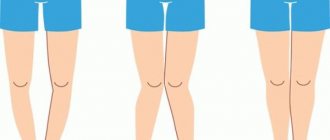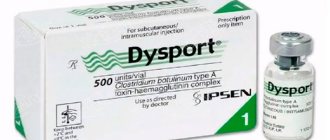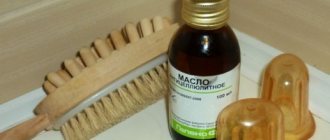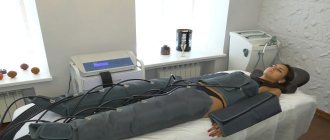In the 90s of the twentieth century, on the basis of traumatology, orthopedics and plastic surgery, a new medical direction was formed - orthopedic (anthropometric) cosmetology - a set of surgical techniques that are aimed at correcting deformities (congenital or acquired) of the upper and lower extremities of the human body. The direction arose against the backdrop of the developments of the famous orthopedic surgeon G. A. Ilizarov, who invented a device for percutaneous osteosynthesis (fixation of broken bone fragments and stimulation of their growth). The first surgical leg lengthening was carried out by Volgograd followers of Ilizarov in 1992 - A. G. Kaplunov and M. F. Egorov.
Methods and indications for implementation
Orthopedic surgeons use two methods to perform the operation - Ilizarov and Bliskunov. Both methods are complex surgical interventions, they are accompanied by pain and a long period of rehabilitation, so before deciding to lengthen the legs surgically, doctors recommend their patients to think carefully.
During an operation using the Ilizarov method, the doctor makes a series of incisions on the patient’s skin, uses a special instrument to cut the outer part of the bone tissue, and installs a device that will subsequently stretch the bone. Leg lengthening using the Ilizarov apparatus is very slow, painful, and the person spends most of the time in the hospital under the supervision of a doctor who is engaged in daily tightening of the fasteners.
Bliskunov’s technique has a slightly different concept, according to which a bone stretching apparatus is implanted into the bone tissue. A ratcheting mechanism remains on the outside of the lower limb, which the patient adjusts independently (the process of stretching the bone mainly occurs at home). The maximum length of leg augmentation is 16 cm (the lower leg is increased by 6 cm, and the hips by 10), but this figure depends on the method of surgical intervention and the individual characteristics of the bone tissue of each organism.
The operation is performed for aesthetic and medical reasons, which include:
- disproportionate length of the lower limbs in relation to the torso;
- the presence of congenital (curvature) or acquired defects in the bone tissue of the legs that prevent a person from moving normally;
- limb dysplasia (impaired development of bone tissue);
- improper healing of bones after a fracture;
- different leg lengths;
- the patient's desire to increase his height.
Ways to lengthen legs at home
In most cases, women's dreams of plastic surgery are unfounded: beauty is not a standard norm, and we are beautiful precisely because of our differences. And the beauty of the body is not the size of the waist or the length of the legs.
Body beauty - in the right proportions
This truth was known to ancient sculptors, who proved that a small, plump woman can be no less beautiful than the long-legged huntress Diana. Therefore, before you decide to lengthen your legs, take a close look at yourself in the mirror: perhaps, despite your small height, your legs are actually long (in accordance with your proportions)?
But to the point. You still can’t convince a woman: if she decides to lengthen her legs, she will do it at any cost.
How to prepare for surgery?
Before surgery to lengthen the legs, the patient must undergo a biochemical analysis of blood and urine, consult with an orthopedic surgeon, cardiologist and anesthesiologist, undergo fluorography, x-rays of the lower extremities and ultrasound examination of the joints.
Preoperative recommendations:
- two weeks before the procedure you need to stop taking blood thinners;
- If possible, you should stop smoking and drinking alcohol (they slow down bone tissue regeneration);
- You cannot eat or drink anything on the day of surgery.
About the results of leg lengthening at home
Many women do not have enough patience in their studies and very often they exclaim:
- My God! I’m already suffering so much, but I haven’t grown a centimeter and nothing has lengthened!
But when the girl is asked how much “that much” is, it turns out that she had been practicing, horror of horrors, for two whole weeks.
Daily leg measurements are a waste of time
So, beauties, the first result after daily training will appear after two to three months, and a more noticeable result will appear after six months. And then measuring your legs every day with a centimeter is a waste of time. The best analyzer is a mirror. Rate yourself:
If you yourself have become slimmer and fitter, then your legs will visually look longer.
Some people make a different kind of mistake:
It is recommended to do exercises with weight-bearing loads for 10-15 minutes a day, and they do it for half an hour, hoping that the higher the load, the sooner and more they will be able to lengthen their legs. The result is burst blood vessels in the legs, pain in the bones and muscles, and general fatigue, which kills further desire to exercise.
There is no way to storm or rush here.
Technique
Surgical lengthening of human legs is carried out using the compression-distraction osteosynthesis method using devices for external and internal bone fixation. This method can enlarge two segments of a limb - the lower leg or the thigh (you cannot stretch several bones at the same time). For distraction (stretching of bone tissue), the doctor needs to make a medical fracture of the femur (to lengthen the femur) or dissect the tibia and fibula (in case of enlargement of the tibia). The operation is performed under general, less often - local or intraosseous anesthesia, it consists of three stages:
Osteotomy is a dissection of the bone, which occurs through an incision in the skin and soft tissues (the incision size is 4-8 cm), and fixation of its fragments with an external or internal device for distraction (depending on the chosen technique, the surgeon applies an Ilizarov apparatus or an internal Bliskunov distractor).- Distraction is a gradual lengthening of the limb, which begins seven days after installation of the device; the rate of stretching depends on the individual characteristics of the patient’s body; on average, the bone grows by 1 mm per day (the process is regulated by daily tightening the nut, which regulates the tension of the bone tissue).
- Fixation is the final phase of the procedure to increase height, during which ossification of the enlarged bone process occurs (on average, the fixation phase lasts 6-12 months).
The duration of the operation to increase height depends on the method of its implementation; on average, it lasts 2.5-3 hours.
Secrets of visually lengthening legs
For the truly lazy, you can tell us the secrets of selecting toiletries and clothing that will allow you to visually lengthen your legs:
You can lengthen your legs by carefully selecting your wardrobe items.
- Watch your posture and gait: Even naturally long legs lose a few centimeters when walking in a bent position.
- You need to walk with your shoulder blades and shoulders turned back, straightened up, and your head raised proudly.
- The foot should spring during the step, and the leg should straighten at the knee.
- However, for orthopedic reasons, the height of the heel should not be too high, so as not to provoke arthrosis of the foot or cause varicose veins. The optimal height is 7 cm.
- straight classic with an arrow in black;
- Avoid contrasting colors in clothes, large tacky designs, rhinestones and any sparkles.
How is the postoperative period like?
Lengthening the lower limbs is a complex and lengthy process. The patient spends the first weeks (25-30 days) after installing the distractor in the hospital under the supervision of doctors. Doctors allow you to move short distances (30-50 meters per day) with the help of crutches 4-5 days after surgery. Pain syndrome worries the patient throughout the entire process of limb augmentation. The pain intensifies when the mode of motor activity is violated and the pace of distraction is not observed. In order to relieve pain, the doctor prescribes oral painkillers to the patient.
The process of lengthening the lower limbs takes 5-7 months, after which the device is removed, and a period of fixation begins, which prevents the formation of deformities in the elongated limb.
During this time, the patient needs rest and a dosed amount of restorative physical exercise (prolonged lack of physical activity leads to muscle atrophy and dysfunction of the joints). The recovery period lasts 4-6 months.
Post-procedure recommendations:
- during the rehabilitation period, doctors recommend that patients perform therapeutic and restorative physical exercises that will help eliminate discomfort in the elongated limb;
- You can start playing sports four months after the end of the limb fixation period;
- Jumping, rollerblading, skating, or active dancing is recommended no earlier than a year later.
The preliminary result after the procedure is assessed at the end of the destruction stage, and the final result is assessed four months after the rehabilitation period. Scars from the use of fixation devices become almost invisible after six months.
Leg lengthening results: before and after photos
Physical exercise
Leg lengthening can be achieved without surgery using gymnastics. Before you start exercising, you need to choose shoes for exercise. Physical education should be carried out on a non-slip surface. There should be no pain or discomfort when performing movements.
After training, it is useful to take a contrast shower and massage the muscles to improve blood circulation and tissue nutrition.
Exercises on the gymnastic wall
- Grab the bar and hang with your arms outstretched so that your feet do not touch the floor. Perform the task with a gradual increase in time.
- Tilt towards the right foot. The body position is maintained with the help of the left limb, which is brought behind the crossbar. Do not bend the knee joint. The exercise starts from the lower tiers, gradually moving higher.
Stretching (splits)
Precautionary measures:
- do not try to do full stretching in the first classes,
- do a warm-up before the exercise,
- Gymnastics should not be performed if you have joint problems or injuries.
Twine can be longitudinal or transverse. It must be performed on the floor in special shoes.
Another option is to cross your legs in the lotus position and rock your hips. Then try to stay in this position for some time. Each time, open the “butterfly wings” more and more.
Exercises should not bring pain or discomfort.
Chair exercises
To perform this element of gymnastics, you need a high chair, in which your feet should not reach the floor. A positive effect is achieved by attaching a special weight to the lower leg. When worn on the legs for a short period of time, the muscle tissue is lengthened and the growth of the kneecap is stimulated. Weights are increased gradually and selected individually according to size. After training, you should relax your muscles by shaking them or stretching them.
Exercises on an inversion table
On the simulator they exercise upside down. Stretching occurs due to the force of gravity when the lower limbs are fixed at the top. Instead of a table, you can use a horizontal bar to increase your height.
Exercises with weights
This type of load is one of the main ways to increase height. Deep lunges with dumbbells and squats are suitable not only for improving muscle stretching, but also strengthening the buttocks. While performing the exercise, you need to monitor your posture. For a good result, you need to do 10 times, 2 repetitions.
Instead of using dumbbells, you can weight your legs with weights or sandbags and run with your knees high for a few minutes.
Walking on your toes
Walking on your toes can be done several times throughout the day. When performing the task, the back should be straight, the chin parallel to the floor, it is necessary to monitor the position of the body and avoid swaying. For best results, place a book or other flat object on your head.
The calf raise exercise is good for lengthening the calf muscles. You need to perform it up to 20 times a day, several approaches. You can increase the load by leaning against a wall or door and lingering on your fingertips for a few seconds.
Mahi
You need to move your leg in different directions. After warming up, try to keep the limb suspended by holding onto a support.
Intensely kick an imaginary ball, pillow or punching bag. Physical education has a positive effect on growth, and the results will be noticeable after just a few weeks of active exercise.
Possible complications and contraindications
Before increasing height surgically, a person needs to familiarize himself with the list of contraindications, which include:
- heart defects;
- diseases of the nervous system;
- active tuberculosis;
- diabetes;
- oncology;
- hepatitis;
- blood diseases;
- inflammatory process on the skin.
Doctors consider age under 18 years to be a relative contraindication to the procedure, because leg lengthening operations are recommended to be performed after the bone tissue of the human body is completely formed.
Possible complications:
- slow regeneration of bone tissue in the area of dissection (most often occurs in smoking patients);
- inflammation of the soft tissues around the Ilizarov wires (wire osteomyelitis);
- contracture (restriction of movement) of the knee or ankle joint (prevents a person from bending or straightening a limb, can be treated with therapeutic exercises).
Estimated prices for surgery to increase height
The cost of leg lengthening surgery depends on which segment of the bone needs to be enlarged - the tibia or the femur, and how many centimeters the limb needs to be lengthened. The cost of the procedure includes 30-50 days of hospital stay (the number of days depends on the clinic and surgical technique) and postoperative outpatient observation by a doctor. Approximate transaction prices are presented in the table.
| Procedure name | Approximate price (USD) |
| Shin enlargement | 3000-8000 |
| Hip enlargement | 4000-10000 |
The compression-distraction osteosynthesis method rarely causes complications, so doctors call it one of the safest methods of surgical correction in the world, but to obtain a positive result, it is necessary to strictly follow the doctor’s postoperative recommendations, perform the necessary therapeutic exercises and not disturb the recovery regime after the procedure.











